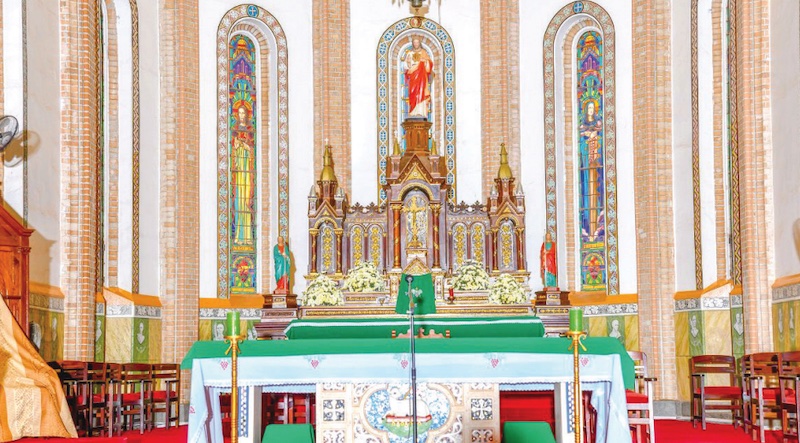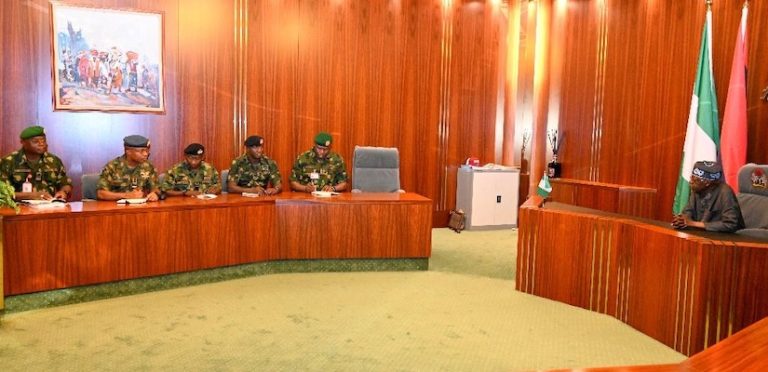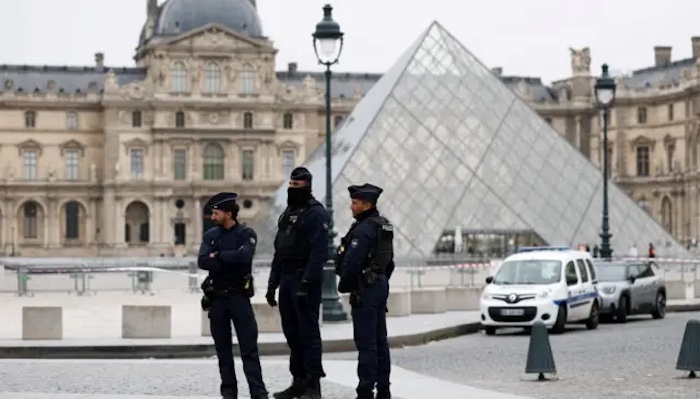
Screenshot
The archbishop of Kampala, Most Rev Paul Ssemogerere, has clarified the official name of Lubaga cathedral to resolve confusion among the faithful and in documents.
For years, the cathedral atop Lubaga Hill, the former site of Kabaka Mutesa’s palace, has been variously referred to as Sacred Heart cathedral, St Mary’s cathedral, or St Mary’s Sacred Heart cathedral.
Addressing thousands gathered for the centenary celebrations, the archbishop said that after cross-checking records in Rome, the official name is St Mary’s cathedral, Lubaga. The celebration, where President Museveni was chief guest, began with the archbishop lighting candles on the altar and the church’s 24 pillars.
The MC noted that of the 24 pillars, twelve represent the 12 tribes of Israel, and, the other, 12 apostles of Jesus Christ, all leading to the altar where Christ offers himself in the mass.
While delivering his homily during the liturgical mass, Archbishop Paul Ssemogerere said the centenary celebration was a moment of reflection for the faithful on the sacrifice and vision of the Church’s forefathers, especially the White Fathers who laid the foundation of Catholicism in Uganda.
He said the past 100 years have been filled with gratitude for their faith, service and commitment to spreading the Gospel. Archbishop Ssemogerere described Lubaga cathedral as a sacred symbol of faith and a cornerstone of Uganda’s Catholic history.
He noted that the cathedral holds a special place in the life of the Church, being the first in Africa to host a pope. Pope Paul VI’s historic visit in 1969, he said, remains deeply engraved in the memory of the Church.
During the mass, the archbishop lifted the same crosier that Pope Paul VI used during his visit and later gifted to the archdiocese. To the observers, it was a living reminder of that milestone in Uganda’s faith journey.
Apart from Pope Paul VI, two other popes; John Paul II in 1993 and Francis in 2015 have visited the mother of cathedrals in Uganda. This makes it one of the few cathedrals on the continent to receive three pontiffs.
Over the years, it has also witnessed three episcopal ordinations, including those of Archbishop Augustine Kasujja, the first African papal nuncio, Bishops Joseph Mukwaya and Christopher Kakooza, and has been the site where hundreds of priests from Kampala Archdiocese and missionary congregations were ordained.
The archbishop said the cathedral’s history extends beyond Catholicism, serving as a beacon of Christian unity. It has welcomed Anglican, Orthodox, and other religious leaders, strengthening interfaith relations and fostering collaboration among different Christian communities in Uganda.
After recounting the milestones and wonders of Lubaga cathedral, Archbishop Ssemogerere urged the faithful not to view the cathedral merely as a physical structure. He reminded them that their bodies are also temples of God and must be treated with the same reverence and purity.
He said the celebration should inspire personal renewal, calling every believer to live in a way that reflects the holiness the cathedral represents.
ABOUT THE CATHEDRAL
The cathedral, which accommodates at least 5,000 people, stands as one of Uganda’s most impressive architectural landmarks. It measures 248 feet in length and 63 feet in width, excluding the walls.
The transept extends 152 feet, and the height from floor to ceiling reaches 50 feet. Construction required about 2.5 million bricks, a testament to the scale of the project. Inside, the cathedral has three altars: the main altar, the altar of St. Theresa of the Child Jesus, and the Martyrs’ altar.
The latter was hand-carved by Brother Bonaventure from a tree taken from the martyrdom site of St Matia Mulumba, giving it deep spiritual significance. These features, among others, make Lubaga cathedral both a historic and sacred masterpiece. Construction began in 1914 and concluded in 1925.
The twin-towered Romanesque cathedral stands on the site of a former palace of Buganda’s Kabaka Muteesa I, father of Mwanga. According to a book titled St Mary’s Cathedral Lubaga by Fr. Yves Tourigny (WF), the current cathedral is the seventh to occupy Lubaga Hill.
Between 1891 and 1914, six earlier “cathedrals” of varying structures stood on the hill, all lost to various circumstances. The first church, built in 1891, was destroyed on January 24, 1892, at around 8pm during religious conflicts.
Within a year, two grass-thatched cathedrals were erected; one was demolished by an earthquake, and the other was burned down by Anglicans. Undeterred, the Lubaga Christians constructed a temporary church in 1893, replaced in 1894 by a more durable structure.
This served until 1901 when, due to the growing Catholic population, a larger church was needed. The sixth church, built in 1901, was made of sun-dried bricks with a grass-thatched roof, measuring 71 feet long and 21 feet wide. Blessed by Bishop Henry Hanlon on March 19, 1901, it served for 24 years until the current cathedral’s construction began.



